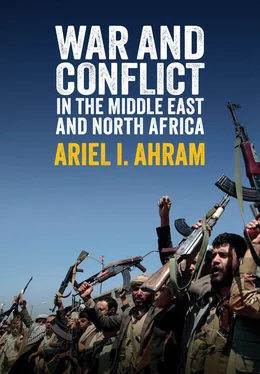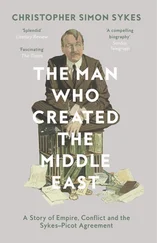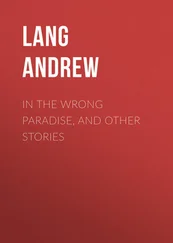18 18. Nicholas P. Jewell, Michael Spagat, and Britta L. Jewell, “Accounting for Civilian Casualties: From the Past to the Future,” Social Science History 42, no. 3 (2018): 379–410; Peter Andreas and Kelly M. Greenhill, eds., Sex, Drugs, and Body Counts: The Politics of Numbers in Global Crime and Conflict (Ithaca, NY: Cornell University Press, 2011).
19 19. Megan Price, Anita Gohdes, and Patrick Ball, “Documents of War: Understanding the Syrian Conflict,” Significance 12, no. 2 (2015): 14–19.
20 20. Nils B. Weidmann, “A Closer Look at Reporting Bias in Conflict Event Data,” American Journal of Political Science 60, no. 1 (2016): 206–18.
21 21. John Broder, “A Nation at War: The Casualties; US Military Has No Count of Iraqi Dead in Fighting,” New York Times, April 2, 2003. It was only in 2018 that the US military was required to keep track and report on civilian casualties caused by US airstrikes and other military actions. Cf. Neta Crawford, “Human Costs of the Post 9/11 Wars: Lethality and the Need for Transparency” (Brown University, Watson Institute for International and Public Affairs, 2018).
22 22. Hannah Fischer, “Iraqi Civilian Deaths Estimates,” in Economics and Geopolitics of the Middle East, edited by Richard Dralonge (New York: Nova Science 2008).
23 23. Hazem Adam Ghobarah, Paul Huth, and Bruce Russett, “The Post-War Public Health Effects of Civil Conflict,” Social Science & Medicine 59, no. 4 (2004): 869–94; Hazem Adam Ghobarah, Paul Huth, and Bruce Russett, “Civil Wars Kill and Maim People – Long after the Shooting Stops,” The American Political Science Review 97, no. 2 (2003): 189–202; Bethany Lacina and Nils Petter Gleditsch, “Monitoring Trends in Global Combat: A New Dataset of Battle Deaths,” European Journal of Population 21, nos. 2–3 (2005): 145–66.
24 24. Zachary J. Foster, “The 1915 Locust Attack in Syria and Palestine and Its Role in the Famine during the First World War,” Middle Eastern Studies 51, no. 3 (2015): 370–94; Leila Tarazi Fawaz, A Land of Aching Hearts: The Middle East in the Great War (Cambridge, Mass.: Harvard University Press, 2014).
25 25. Firdausi Qadri, Taufiqul Islam, and John D. Clemens, “Cholera in Yemen – an Old Foe Rearing Its Ugly Head,” New England Journal of Medicine 377 (2017): 2005–7.
26 26. United Nations Office for the Coordination of Humanitarian Affairs, “Largest Consolidated Humanitarian Appeal for Yemen to Provide a Lifeline to 13.1 Million People” (2018).
27 27. Les Roberts et al., “Mortality before and after the 2003 Invasion of Iraq: Cluster Sample Survey,” The Lancet, no. 9448 (2004): 1857–64. A. Hagopian et al., “Navigating a Four-University, Three-Country Collaboration to Estimate Mortality in Iraq after the 2003 Invasion and Occupation,” The Lancet Global Health, no. S1 (2014): S49.
28 28. Iraq Family Health Survey Study Group, “Violence-Related Mortality in Iraq from 2002 to 2006,” The New England Journal of Medicine, no. 5 (2008): 484–93.
29 29. Lacina and Gleditsch, “Monitoring Trends in Global Combat: A New Dataset of Battle Deaths.”
30 30. For data, Pierre Razoux, The Iran–Iraq War (Cambridge, Mass.: Harvard University Press, 2015).
31 31. Joost R. Hiltermann, A Poisonous Affair: America, Iraq, and the Gassing of Halabja (New York: Cambridge University Press, 2007).
32 32. Therése Pettersson and Kristine Eck, “Organized Violence, 1989–2017,” Journal of Peace Research 55, no. 4 (2018): 535–47.
33 33. Neil Bowie and Alex Schmid, “Databases on Terrorism,” in Routledge Handbook of Terrorism Research, edited by Alex Schmid (New York: Routledge, 2011).
34 34. Additionally, GTD requires two of the following three criteria to be present: (1) the act must be motivated by a political, economic, religious, or social goal; (2) there must be evidence of an intention to coerce, intimidate, or convey some other message to a larger audience (or audiences) than the immediate victims; (3) and the action must be outside the context of legitimate warfare activities and transgress international humanitarian law concerning civilians or non-combatants. See National Consortium for the Study of Terrorism and Responses to Terrorism, “Global Terrorism Database” (College Park, Md.: START, University of Maryland, 2019).
35 35. Paul D. Williams, War and Conflict in Africa (Cambridge: Polity, 2016), 42.
Конец ознакомительного фрагмента.
Текст предоставлен ООО «ЛитРес».
Прочитайте эту книгу целиком, на ЛитРес.
Безопасно оплатить книгу можно банковской картой Visa, MasterCard, Maestro, со счета мобильного телефона, с платежного терминала, в салоне МТС или Связной, через PayPal, WebMoney, Яндекс.Деньги, QIWI Кошелек, бонусными картами или другим удобным Вам способом.












